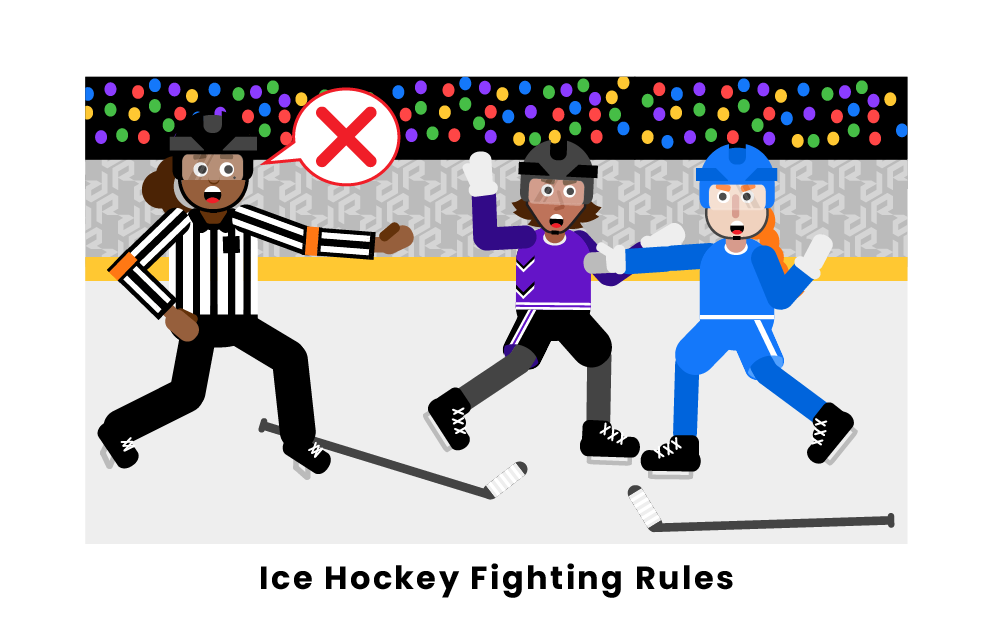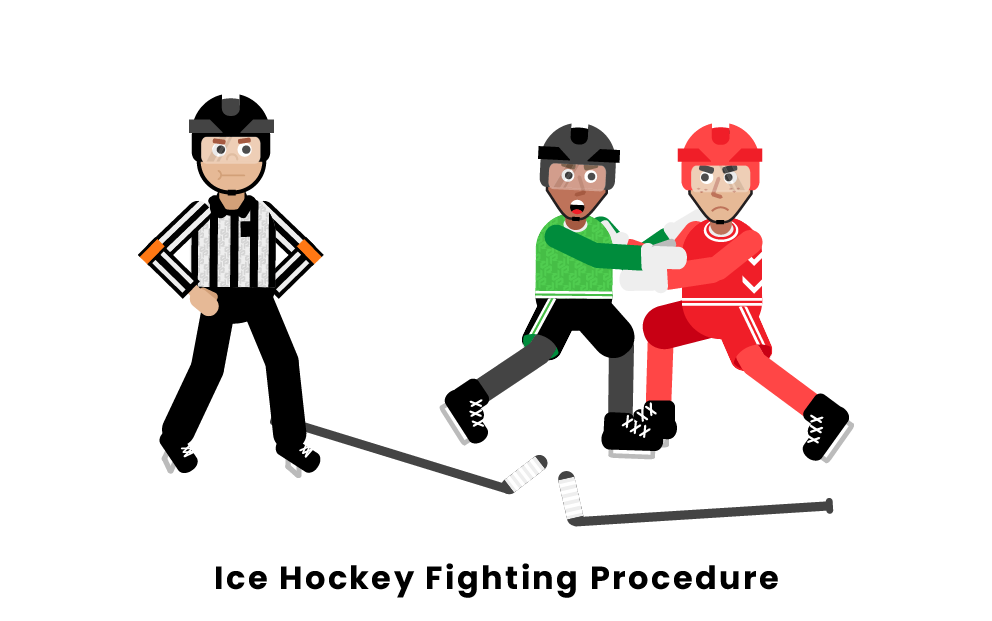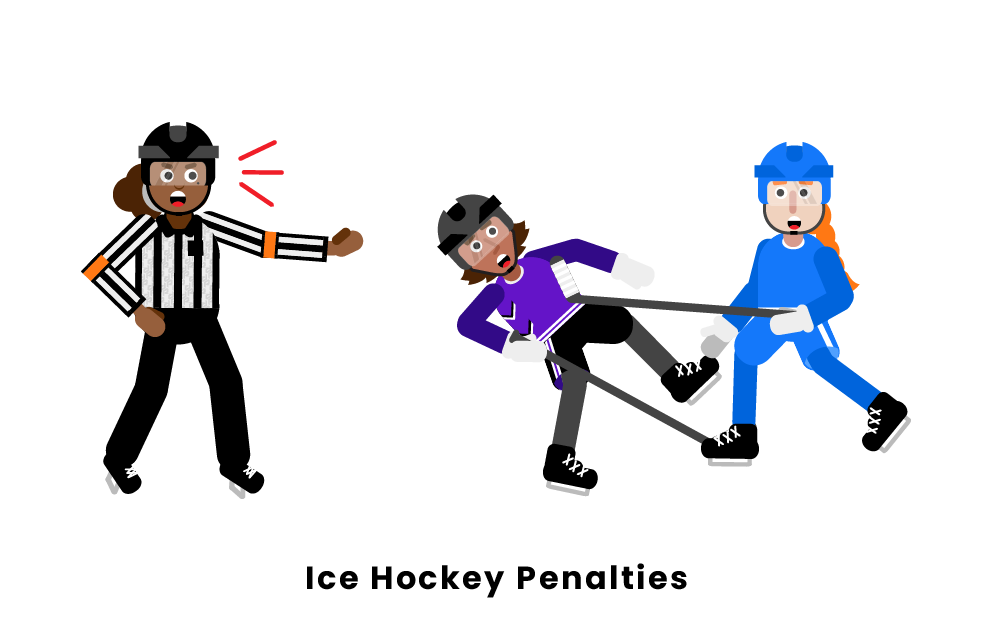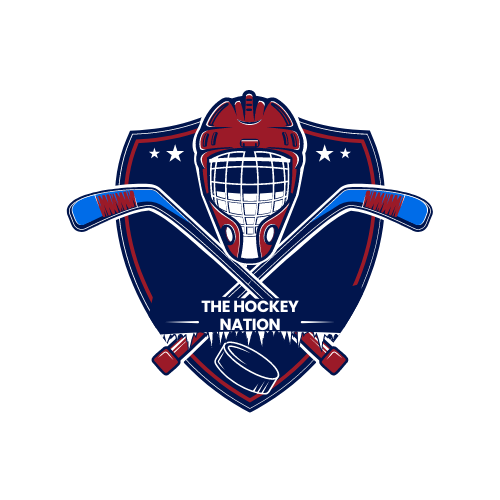Fighting adds a thrilling edge to ice hockey, making it one of the sport’s most distinctive features. Unlike any other game, throwing punches is not just allowed but at times even cheered on. Despite a recent decline, fighting still holds a significant place in the game. Let’s dive into all you need to know:
What are the rules regarding fighting in ice hockey?

If you’ve never tuned into a hockey game, you might think fights involve players just dropping gloves and going at it. But hey, it’s more complex than that! Most pro leagues have strict rules and penalties for fighting.
According to the NHL rulebook, a proper fight is when a player throws or tries to throw repeated punches. It can also happen when players grapple in a way that makes it tough for the refs to break them up. And hey, fights are usually one-on-one, but you might see a few happening at once on the ice!
Now, the rulebook gets into all sorts of details, like the infamous “instigator rule” (Rule 46.11). If a player starts a fight, they face extra penalties on top of the standard five-minute major. And let’s not forget the crazier scenarios like players hopping off the bench to brawl or even duking it out with coaches (yep, that’s happened!).
So, fighting in hockey? It’s a whole world of rules and regs!
The process: Stopping the game and players’ roles

When a scuffle breaks out in a hockey game, the refs blow the whistle to halt play. All the players left on the ice head back to their benches, while the refs and linesmen position themselves to keep an eye on the tussle from a safe distance.
Before the fists fly, players can’t take off their helmets – it’s a no-no and could lead to a penalty for unsportsmanlike behavior. The bout goes on until someone hits the ice or the refs step in to break it up.
Escalation and brawls: The full-on altercations
When it comes to hockey, fights between two players are pretty typical, but you know what? Sometimes things can escalate into crazy brawls with a bunch of players from both teams jumping in.
It’s like tensions just boil over, and bam, chaos on the ice! Shoutout to the refs and linesmen for swooping in, keeping things in check, and making sure everyone stays safe out there.
The penalty box: Consequences and power play dynamics
After a fight, both players end up in the penalty box for a set time, usually around five to 15 minutes. Their teams have to play shorthanded during this period, but no team gets an advantage from the fight. The penalty box is like a timeout until they can get back in the game.
Even though fighting is a big part of hockey tradition, the NHL has rules to control and discourage it. Knowing the ins and outs of fighting, the penalties, and what happens next on the ice is key to understanding this tradition in today’s game.
Why is fighting encouraged in ice hockey?

Fighting in hockey is kind of against the rules, according to former NHL ref Kerry Fraser — but once it starts, it usually goes on. You see, it’s like an unspoken agreement among players that’s been around forever.
In today’s NHL, fights often kick off when one player stands up for a teammate after a rough play. The game’s so intense that tempers run high, leading to fights for all sorts of reasons like trash-talking or seeking payback from a past game.
It all circles back to this unwritten rulebook in hockey. There are these unofficial rules everyone gets, like fighters should go toe-to-toe with someone their own size, and they should drop their gear before duking it out to prevent injuries.
This code is a big part of hockey, sometimes boosting team spirits. And get this, players might throw down on the ice without even being mad at each other! In one game, Brenden Dillon and Austin Watson were mic’d up when they decided to fight. Surprisingly, they chatted about their summer plans in the penalty box afterward. Just hockey things!
How did fighting in ice hockey get its start?
Hey, remember when I said hockey fighting has been around forever? Well, it’s practically as old as the game itself. The first indoor ice hockey game in Montreal back in 1875? Yeah, it ended in a brawl between players and fans!
According to The Hockey News, the first documented in-game fight was in 1890. Back then, fighting wasn’t as regulated as it is now and things could get pretty brutal. Like in 1905, when Alcide Laurin tragically passed away after a violent incident on the ice.
As the sport evolved, so did the physicality. Players got bigger, stronger, and fighting became a regular part of the game. Fast forward to the ’90s, and the NHL was full of heavyweights like Tie Domi, Bob Probert, and Rob Ray – known for their fighting skills.
How is fighting in ice hockey viewed today?
Fighting in hockey has long been a contentious topic, with recent years shining a spotlight on the risks associated with this intense aspect of the game. The tales of enforcers like Todd Ewan and Bob Probert, whose lives were tragically cut short, serve as stark reminders of the toll that fighting can take.
While calls to abolish fighting in hockey have grown louder, the reality is that this tradition is deeply rooted in the sport’s history. Yet, there’s a noticeable shift in player attitudes towards health and safety, reflecting a growing awareness of the impacts of fighting on their well-being.
The landscape of hockey fights is evolving, with statistics showing a decline in their frequency. Despite this shift, the spirit of the sport remains intertwined with the occasional fisticuffs, echoing Rodney Dangerfield’s classic quip: “I went to a fight and a hockey game broke out!”
Conclusion
In sum, the phenomenon of fighting in ice hockey is a complex tradition with roots that dig deeply into the sport’s heritage.
While it embodies a controversial attribute of the game, evoking debate around player safety and sportsmanship, it also stands as a testament to hockey’s ruggedness and camaraderie. The landscape of fighting in the NHL is unmistakably undergoing change, informed by evolving attitudes towards player health and a better understanding of the long-term effects of concussions.
Yet, as the league continues to grow and adapt, the essence of fighting, as a form of self-regulation and team bonding, remains a unique characteristic of the sport.
Whether considered an outdated practice or an integral part of the game’s culture, fighting in ice hockey continues to spark dialogue, reflecting the dynamic nature of this beloved winter sport.
FAQs on Ice Hockey Fighting Rules
Q: Why are players allowed to fight in ice hockey?
A: While fighting is technically against the rules, it’s a tradition deeply embedded in the culture of the game. It’s seen as a way for players to police themselves, protect teammates, and settle disputes on the ice.
Q: What are the penalties for fighting in NHL games?
A: Players involved in a fight typically receive a five-minute major penalty. Depending on the circumstances, additional penalties such as misconduct or game misconduct penalties can also be applied.
Q: Has the frequency of fights in NHL games changed over time?
A: Yes, the frequency of fights in NHL games has been decreasing over the years. This decline is attributed to changes in playing style, stricter enforcement of rules, and a growing emphasis on speed and skill over physical aggression.
Q: What’s the potential impact of fighting on players?
A: Fighting can lead to immediate physical injuries such as cuts, bruises, or broken bones. There’s also concern about the long-term impact, including the risk of concussions and their associated effects on mental health.
Q: Do fans support fighting in hockey?
A: Fan support for fighting in hockey is mixed. Some view it as an essential and exciting part of the game that adds an element of physicality and emotion. Others believe it detracts from the skill and speed of hockey, advocating for its reduction or elimination.
Q: How does fighting affect team dynamics in hockey?
A: Fighting can have a galvanizing effect on a team, boosting morale and solidarity among players. It’s often seen as a player taking a stand for their teammates, which can be a powerful motivator and enhance team cohesion.
